In a digital realm full of overflowing inboxes and fleeting attention spans, the fate of your emails hangs in the balance.
With a single click, emails travel toward your audience’s inbox, navigating through dangerous paths of spam filters, wary recipients, and discerning ISPs and ESPs.
The key to unlocking your email sending potential lies in email sender reputation, where several factors determine whether your messages will soar or be left unopened.
So, let’s discuss what’s behind a good email sender reputation as we uncover factors impacting it and equip you with the tools and strategies to conquer the digital stage.

Table of Contents:
- What is Email Sender Reputation?
- The Consequences of Having a Poor Email Sender Reputation
- 4 Tools for Checking Email Sender Reputation
- 10 Time-Tested Strategies to Improve Email Sender Reputation
- 1. Maintain a Clean Email List
- 2. Engage with Flair and Authenticity
- 3. Unleash the Power of Double Opt-In
- 4. Monitor and Respond to Feedback
- 5. Practice Proper Email Authentication
- 6. Optimize Sending Frequency
- 7. Respect Unsubscribe Requests
- 8. Maintain a Good IP Reputation
- 9. Build Relationships with ISPs
- 10. Keep Up with Email Best Practices
What Is Email Sender Reputation?
Email sender reputation reflects your email sending practices in the eyes of the internet service providers (ISPs) and email service providers (ESPs).
Think of it as your online persona, the reputation that precedes you when sending emails. It determines whether your messages will make it to the recipients’ inboxes or end up lost in spam folders.
It’s a testament to your credibility, reliability, and trustworthiness in the email universe.
What Is A Good Email Sender Reputation Score?
The quest for a good email sender reputation score is like chasing the perfect harmony in a symphony, where precision and balance are the keys to success.
But what exactly constitutes a "good" score when you think of “what is my email sender reputation”? Let's shed some light on this.
A good email sender reputation score signifies that you have earned the trust and respect of ISPs and ESPs, and your emails are welcomed into your recipients' inboxes.
It's important to note that different internet and email service providers have unique ways of measuring and evaluating sender reputation. They employ intricate algorithms and ever-evolving metrics to assign scores to your sending practices.
And on your end, you can use tools to measure and manage your reputation score. Plenty of tools can do that — we’ll discuss four examples later in the article.
Now, let's talk numbers.
While the scoring systems may differ, a score range of 80 to 100 (or equivalent) is often considered desirable.
A score in this range indicates that you've struck the right chord with your email sending practices, maintaining a high level of engagement, low complaint rates, and adherence to technical standards.
However, don't be frustrated if you hover below 80. Reputation scores are dynamic and can fluctuate based on various factors. It's an ongoing journey of continuous improvement and adaptation.
Factors Affecting Email Sender Reputation
Now, you might wonder, "How does this reputation come to be?" Well, it's a combo of your email practices and the judgment of ISPs and ESPs.
One crucial aspect is your engagement with recipients. Are your emails being opened, read, and interacted with? Or are they unnoticed and left to gather digital dust?
ISPs and ESPs observe how much engagement you get to determine your worthiness as a sender. And so should you—keep track of your email marketing metrics like engagement, click-through, and open rates.
Another essential element is the feedback you receive from recipients. Are they marking your emails as spam or junk? Do they hit the "unsubscribe" button?
This feedback is like a critical review of your performance. A positive response uplifts your reputation, while negative feedback can leave you singing the blues.
Furthermore, the technical aspects of email sending also play a pivotal role. The ISPs and ESPs peek under the hood and examine factors like email authentication, proper formatting, and adherence to industry standards.
Ensuring these technicalities are in harmony is crucial, as they contribute to your email sender reputation.
Lastly, the quality and relevance of your content make or break your sender reputation. Engaging content that sparks conversations, resonates with recipients' desires, and provides value is what elevates your reputation.
So, aim to create interesting content that goes beyond the usual and makes a lasting impression.
And just like that, you’ve learned the factors that combine to shape your email sender reputation. Monitoring your efforts regarding these is essential, striving for a balanced composition that captivates ISPs, ESPs, and recipients.
The Consequences Of Having A Poor Email Sender Reputation
So why should you care about your email sender reputation in the first place?
Here are the consequences a tarnished sender reputation can lead to.
1. Decreased Deliverability
The first casualty of a poor sender reputation is the low deliverability of your emails.
As we know, ISPs and ESPs use their algorithms to assess the trustworthiness and quality of email senders like yourself.
If your reputation is marred, ISPs and ESPs may reroute your emails to spam folders or block them altogether, preventing them from reaching the intended recipients.
Instead of gracing the primary inbox, your emails may be sent to the dark corners where they are unseen and unheard.
Consequently, your messages fail to capture recipients' attention, diminishing their effectiveness and undermining communication and marketing goals.
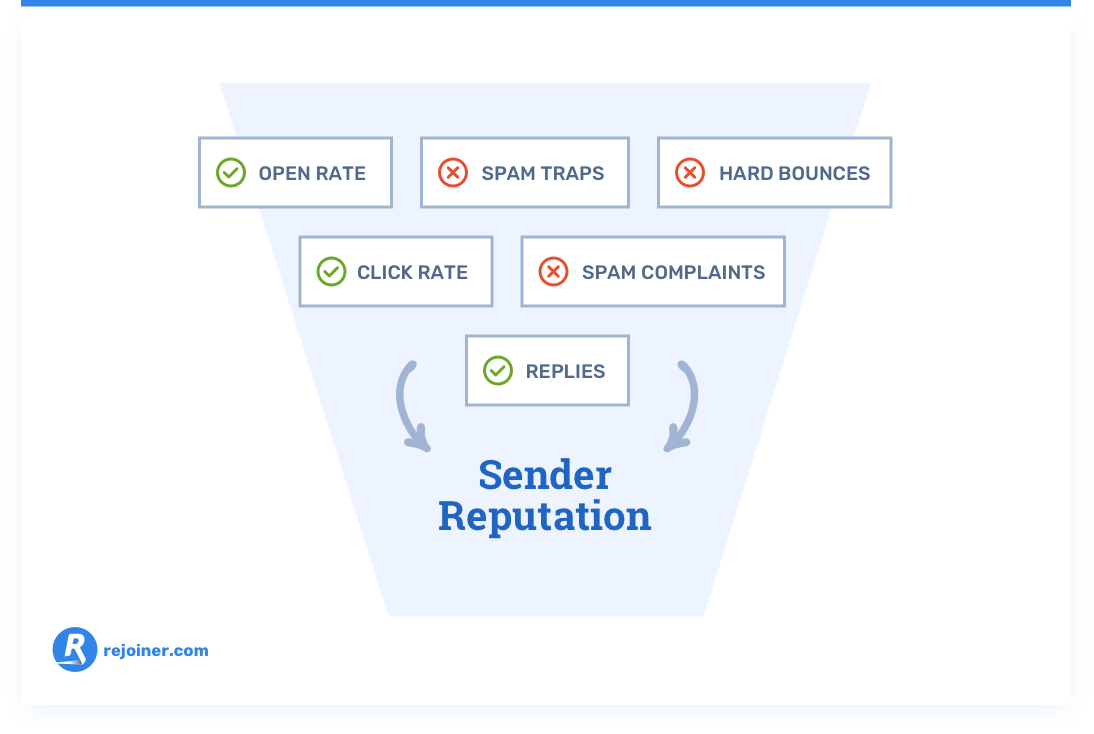 Image source: Rejoiner
Image source: Rejoiner
2. Decreased Engagement and Response
Engagement levels often suffer when your emails are viewed as suspicious due to a poor sender reputation. Recipients may hesitate to open or interact with your messages, perceiving them as unwanted or potentially harmful.
So, reduced engagement translates into lower open rates, click-through rates, and overall poor response, thwarting your communication objectives.
3. Increased Complaints and Unsubscribes
High complaint and unsubscribe rates signal disengagement and contribute to a downward spiral in reputation. ISPs and ESPs take note of these negative interactions, further amplifying the challenges you face in reaching inboxes.
4. Setting Back Future Email Campaigns
A poor sender reputation can have a lasting impact on your future email campaigns. Even if you improve and attempt to rectify past mistakes, rebuilding a positive reputation takes time and effort.
The consequences of a tainted reputation may persist, hindering the effectiveness of your future email marketing ideas and efforts.
5. Getting Blacklisted
If your reputation reaches a critically low point (on average, below 60), you may be blacklisted. And the act of being blacklisted can have severe repercussions for your email marketing efforts, casting you into a digital exile.
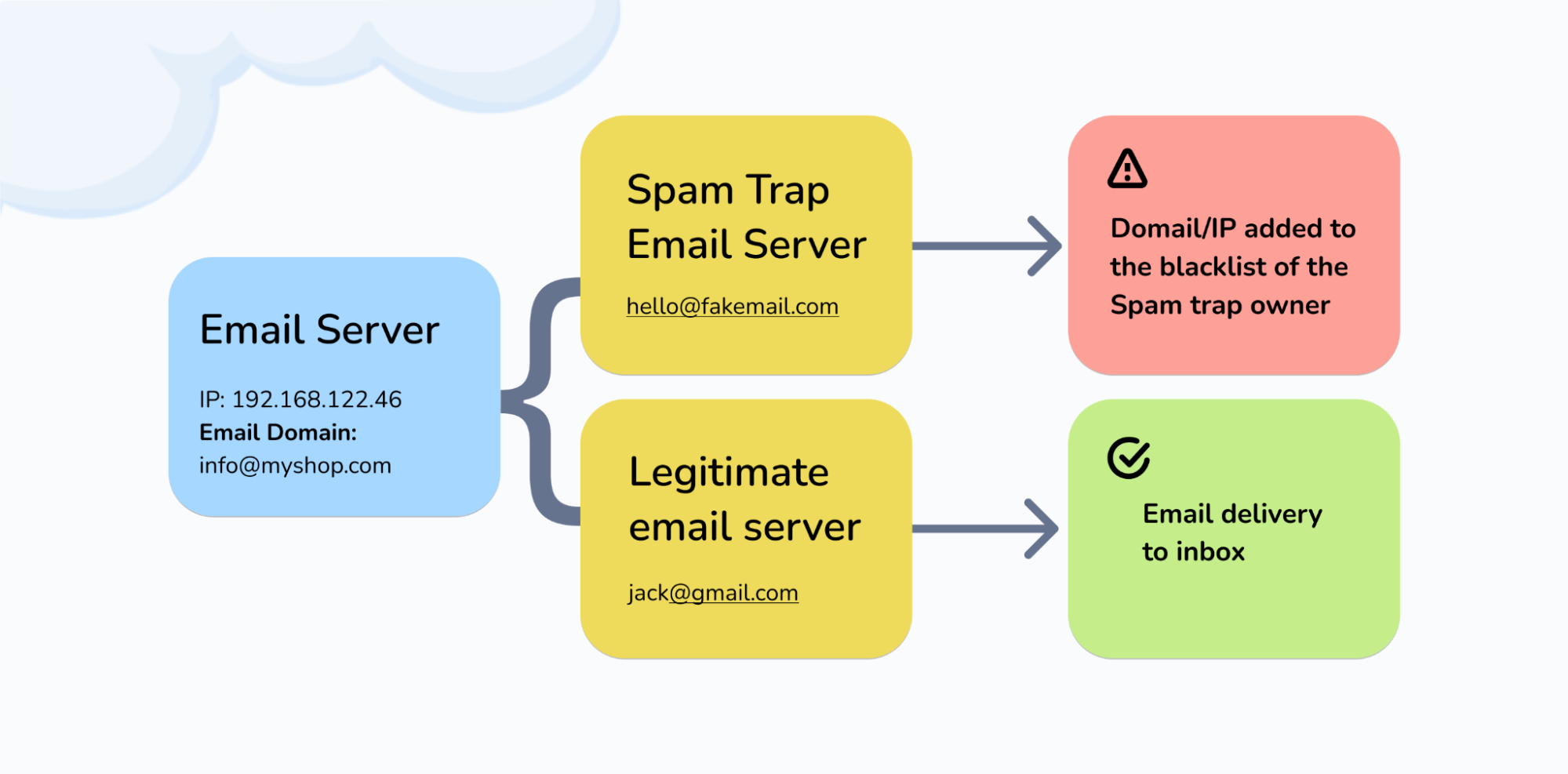 Image source: MailBuster
Image source: MailBuster
Prevention, however, is the key to avoiding the perils of a low email sender reputation. So, approach reputation management with diligence and a willingness to adapt, and let the value of your email campaigns echo far and wide in your recipients’ inboxes.
4 Tools For Checking Email Sender Reputation
Arming yourself with the right tools is vital in the battle for a high email sender reputation. Here’s a list of tools that can help you reclaim your rightful place among trusted senders.
1. Senderscore.org
 Senderscore.org, powered by Validity, comprehensively assesses your email sender reputation. It assigns a score based on volume, complaint rates, and email infrastructure. This tool offers valuable insights into how ISPs and ESPs may perceive your sending practices.
Senderscore.org, powered by Validity, comprehensively assesses your email sender reputation. It assigns a score based on volume, complaint rates, and email infrastructure. This tool offers valuable insights into how ISPs and ESPs may perceive your sending practices.
Pricing: Free
2. Mailtester.com
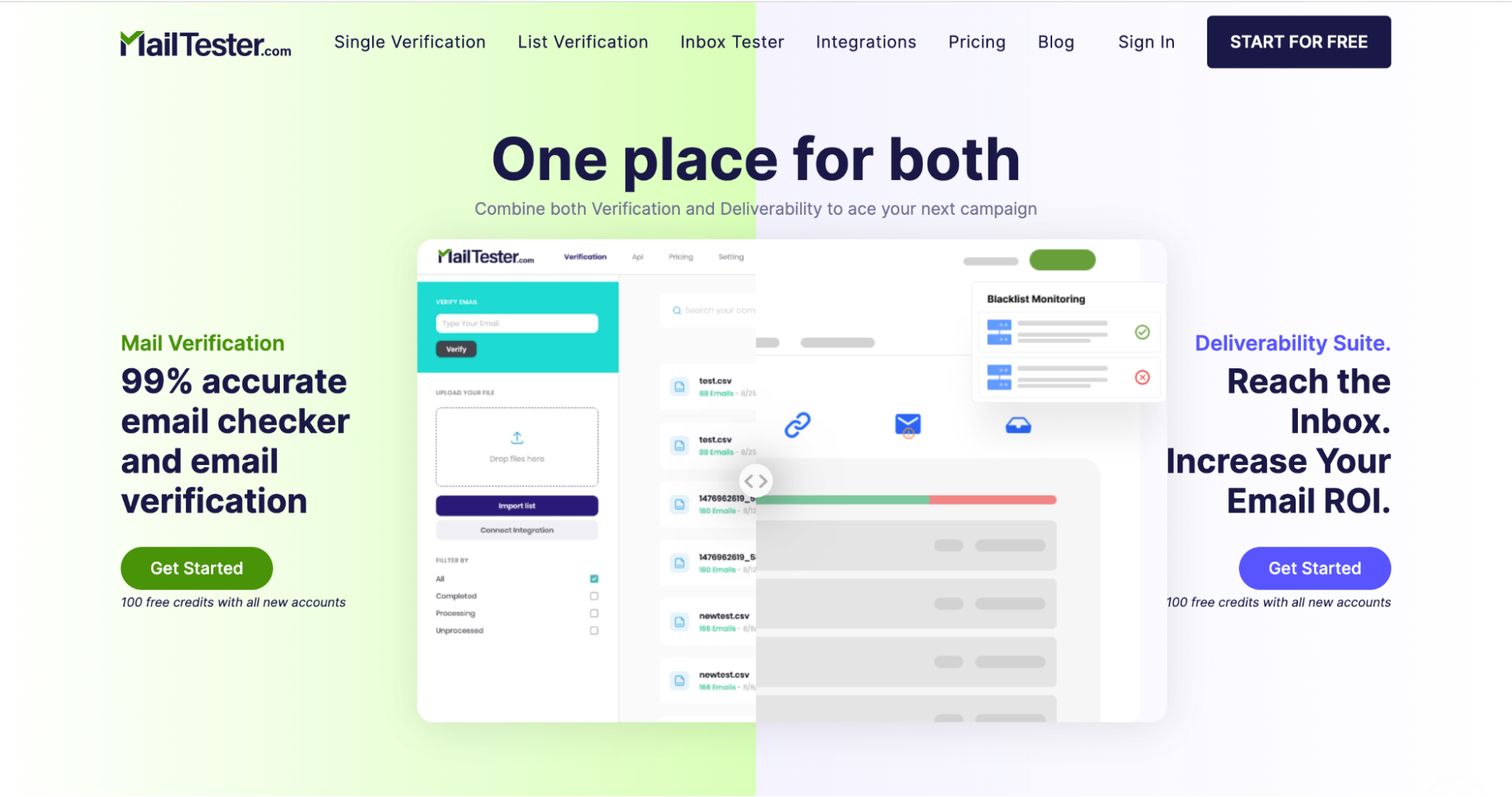 Mailtester.com allows you to verify the deliverability of your emails and check email sender reputation. It performs various checks to determine the health of your email infrastructure including your DNS configuration and runs spam filtering tests. Also, the tool enables checking if your sender IP address or domain is blacklisted.
Mailtester.com allows you to verify the deliverability of your emails and check email sender reputation. It performs various checks to determine the health of your email infrastructure including your DNS configuration and runs spam filtering tests. Also, the tool enables checking if your sender IP address or domain is blacklisted.
Pricing: starts at $19 per 5,000 emails
3. MXtoolbox.com
 MXtoolbox.com is a comprehensive tool that provides an email sender reputation check and a variety of tests related to email servers.
MXtoolbox.com is a comprehensive tool that provides an email sender reputation check and a variety of tests related to email servers.
It includes an SMTP reputation check which is basically a mail server reputation test, a blacklist check to see if your server is listed on known blacklists, and an SPF check to verify your domain's sender policy framework record. All these features can help identify potential issues that could harm your email sender's reputation.
Pricing: 3 plans available (free, $129/month, or $399/month)
4. Multirbl.valli.org
 MultiRBL.valli.org is a free multiple DNSBL (DNS-based Blackhole List) or RBL (Real-time Blackhole List) lookup and FCrDNS (Forward Confirmed reverse DNS) check tool. It checks the IP address of the email sender against multiple blacklists to see if it's listed on any of them.
MultiRBL.valli.org is a free multiple DNSBL (DNS-based Blackhole List) or RBL (Real-time Blackhole List) lookup and FCrDNS (Forward Confirmed reverse DNS) check tool. It checks the IP address of the email sender against multiple blacklists to see if it's listed on any of them.
Pricing: Free
These four tools provide valuable insights but should be used as part of a broader reputation management strategy. Interpreting the tools’ results with other email marketing metrics is essential to take necessary actions to avoid poor sender reputation email consequences.
10 Time-Tested Strategies To Improve Email Sender Reputation
If your email sender reputation needs a boost, fear not! Here are some proven strategies to enhance your reputation and regain the trust of ISPs and recipients alike.
Strategy 1. Maintain a Clean Email List
A healthy list improves engagement, lowers complaint rates, and improves deliverability.
Start by ensuring your email list is clean and up to date. Regularly remove inactive or invalid email addresses and promptly handle any bounces.
Also, adopt suppression list management as an ongoing practice to keep your contact list clean and up-to-date.
Suppression lists ensure that you don’t email those who’ve opted out, only reaching an engaged and interested audience. This reduces the risk of your messages being flagged as spam.
Strategy 2. Engage with Flair and Authenticity
Infuse your emails with a touch of infectious vibrancy. Craft compelling content that resonates with your audience, speaking directly to their needs and curiosities.
Also, segment your subscribers, wield the power of personalization, and attract their attention so that they’re eager to interact, respond, and embrace your messages.
Strategy 3. Unleash the Power of Double Opt-In
Use a double opt-in process to validate and confirm email subscriptions. This two-step verification ensures that subscribers genuinely want to receive your emails, reducing the chances of spam complaints and unsubscribes, minimizing the risk of discontent, and improving your sender reputation.
In many places, the double opt-in is the best way you know you’re compliant with privacy laws and regulations.
Strategy 4. Monitor and Respond to Feedback
Stay vigilant by monitoring feedback and complaints from recipients. Set up feedback loops with ISPs and ESPs to gain valuable insights into how your emails are perceived, engaging in a dialogue that drives you towards improvement and understanding.
Additionally, promptly address recipients' issues or concerns when such arise, demonstrating your commitment to delivering a positive email experience.
Strategy 5. Practice Proper Email Authentication
Arm yourself with the tools of authentication like:
- SPF (Sender Policy Framework)
- DKIM (DomainKeys Identified Mail)
- DMARC (Domain-based Message Authentication, Reporting, and Conformance)
These will help you shield your emails from the scrutinizing eyes of ISPs and ESPs. The protocols validate your email messages, fortifying their authenticity and defending them against uncertainty and suspicion.
Strategy 6. Optimize Sending Frequency
Find the right balance when it comes to sending frequency. Bombarding recipients with excessive emails can annoy them and increase complaint rates.
On the other hand, infrequent sending may cause recipients to forget about your brand.
So, experiment with different frequencies to find the sweet spot that resonates with your audience, ensuring your messages arrive precisely when your recipients are most receptive.
Strategy 7. Respect Unsubscribe Requests
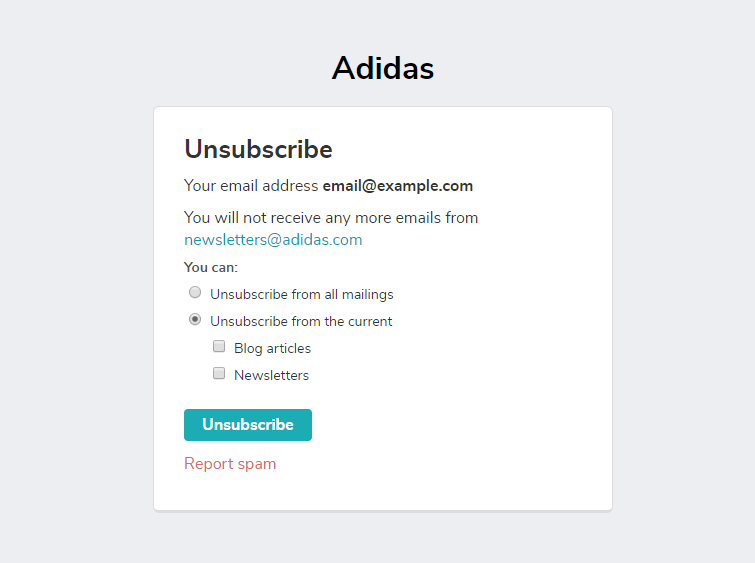 Image source: SendPulse
Image source: SendPulse
Honor unsubscribe requests promptly and ensure the process is easy for recipients.
Make the unsubscribe link clearly visible in your emails and provide a hassle-free way for recipients to manage their preferences.
Respecting unsubscribe requests reduces complaint rates and demonstrates your commitment to recipient consent.
Strategy 8. Maintain a Good IP Reputation
Monitor the reputation of your sending IP addresses. Avoid sending emails from IP addresses with a history of spamming or a poor reputation.
Or take a step further and consider using a dedicated IP address to maintain a strong reputation that ISPs and ESPs recognize.
When you change ESPs, it’s important to do IP warming from the start to set yourself up for success. IP warming is a practice that helps you establish a sender reputation with an ESP.
When first sending from a new ESP, you basically send to a smaller segment of your email list your campaigns (as opposed to a huge blast out to your whole list). Your smallest, first segments should be your absolute most engaged contacts.
Once these very engaged contacts open the campaigns you send in your IP warming, this signals to ISPs that you’re a trustworthy sender, and that you belong in someone’s inbox.
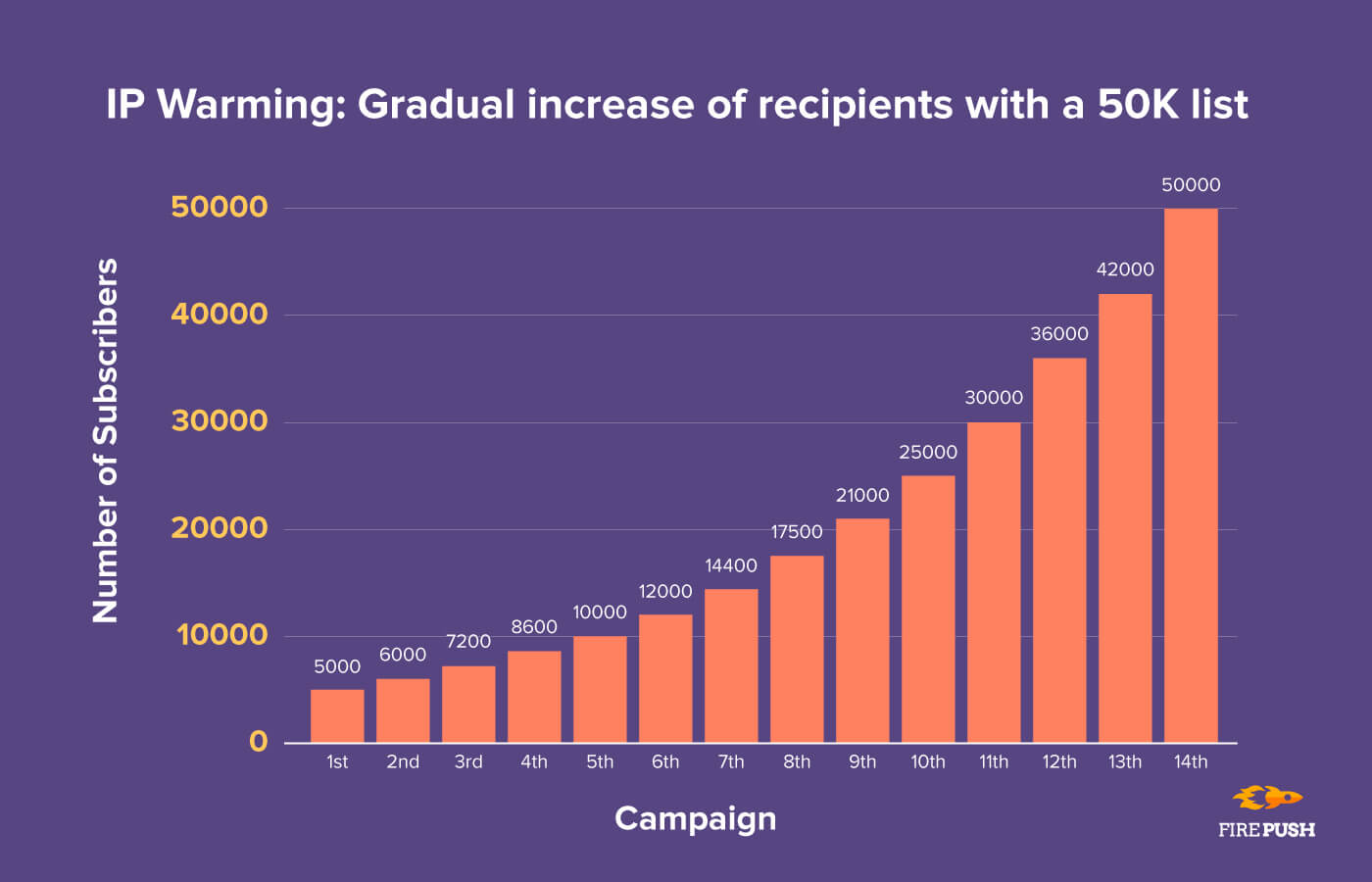
Strategy 9. Build Relationships with ISPs
Foster positive relationships with ISPs and ESPs by forging connections rooted in trust and mutual understanding.
Familiarize yourself with their guidelines, and prove yourself a worthy ally. A partnership with ISPs and ESPs can open doors, amplify your reach, and solidify your reputation.
Strategy 10. Keep Up with Email Best Practices
Keep an eye on the cutting-edge email best practices, challenging norms and redefining what it means to be an email sender of distinction.
Stay informed, adapt to industry changes, and defy the status quo. Your strive for being up-to-date will guide you toward optimized campaigns that dazzle and captivate.
With these time-tested strategies in your arsenal, you can reclaim your email marketing sender reputation with audacity and flair. Let your emails show authenticity, value, and care, and watch your sender reputation soar.

Final Word
In email sending, a strong sender reputation is a gateway to success, ensuring that your messages reach their intended recipients.
Sender reputation plays a vital role in building trust, fostering engagement, establishing a positive brand image, and, ultimately, mastering your email deliverability.
Even among email service providers, there can be a lot of variation in deliverability. We recommend that you look into deliverability before choosing the right ESP for your store. By maintaining a great sender reputation and choosing an ESP that makes deliverability a priority, you’re set up for success.


